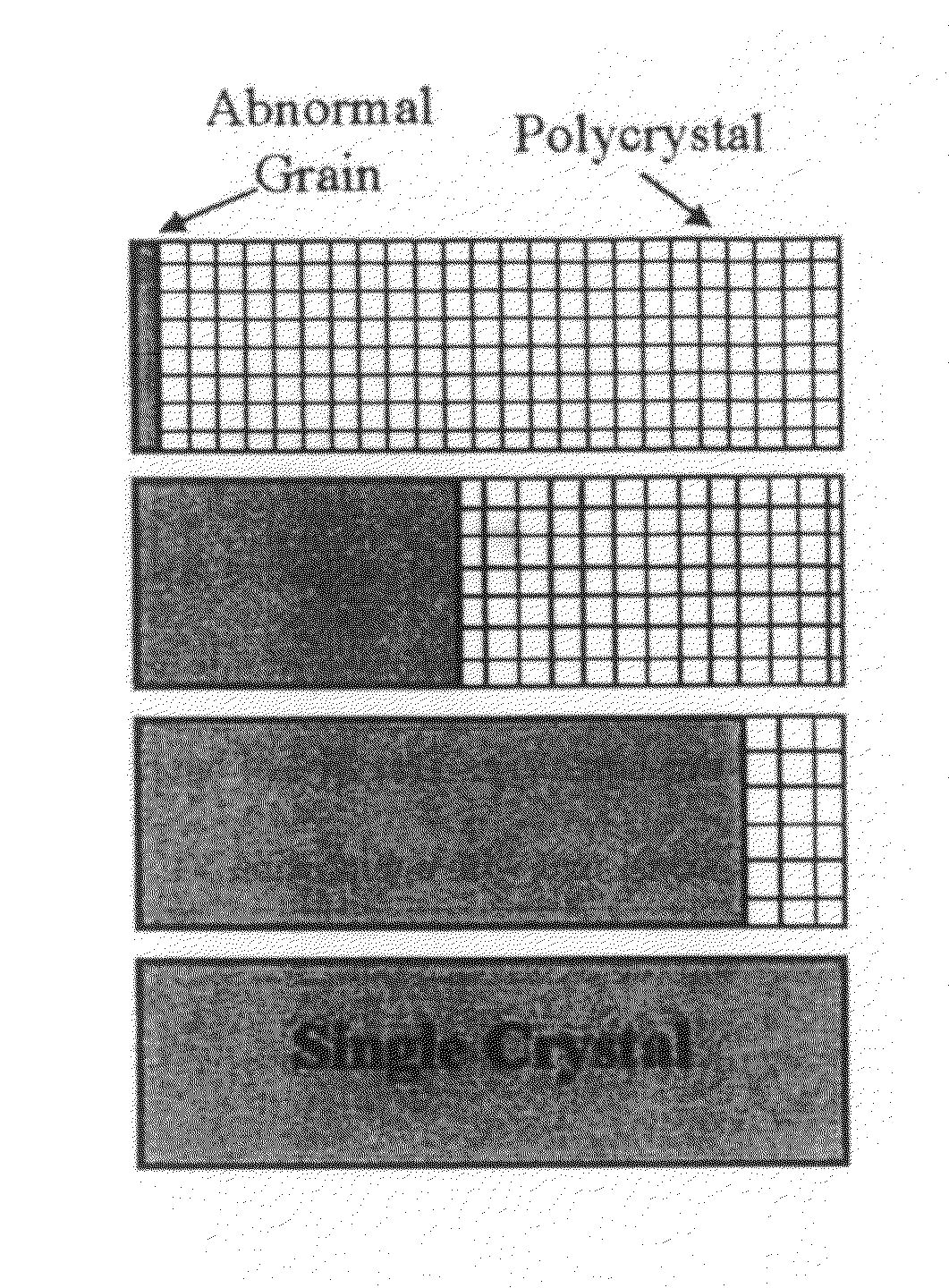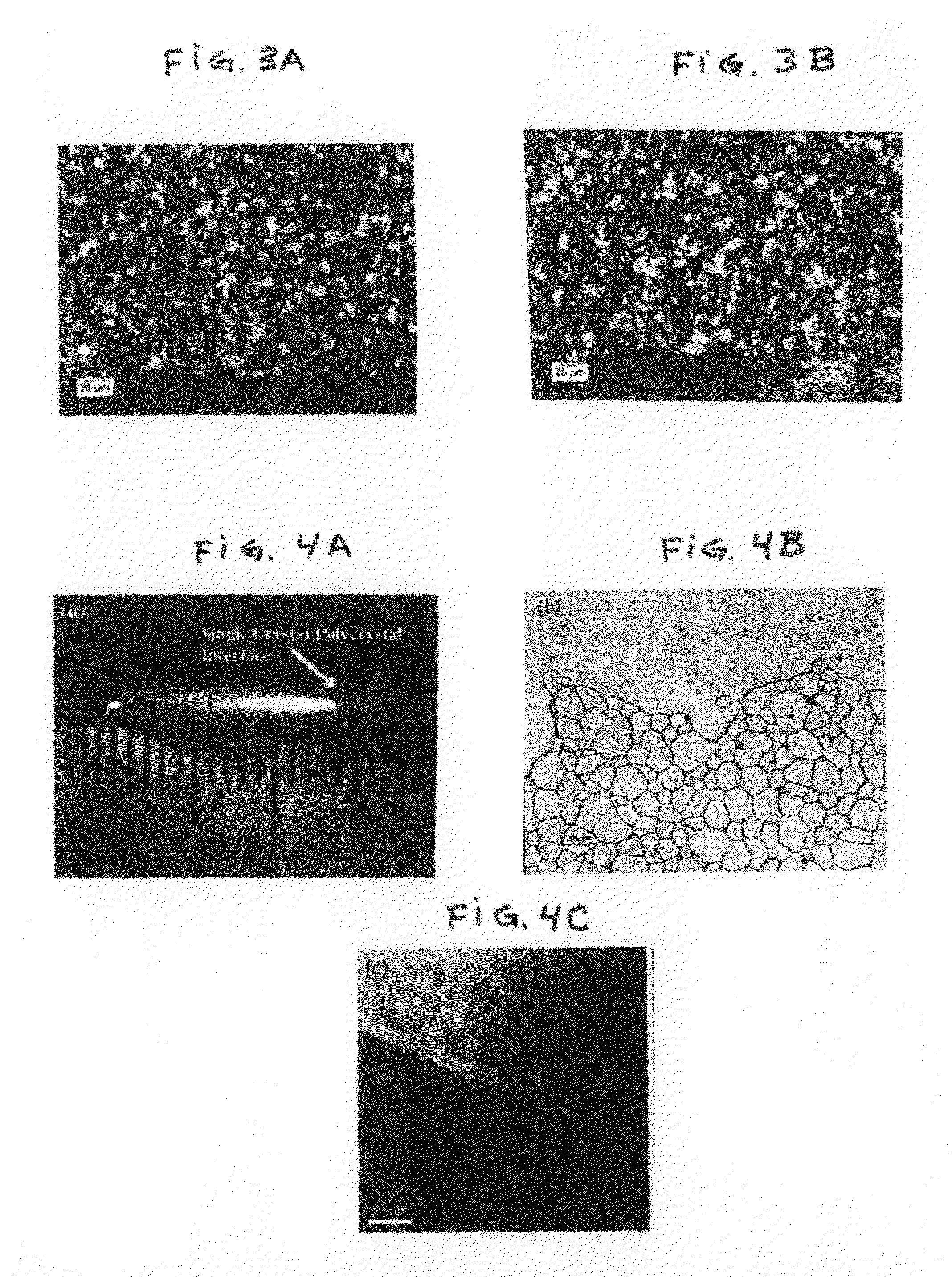Single crystal conversion process
a single crystal and conversion process technology, applied in the direction of single crystal growth, polycrystalline material growth, eutectoid material demixing, etc., can solve the problems of shortening the service life of the lamp, adversely affecting the structure integrity of the plasma lamp envelope, and less than ideal for plasma lamp envelopes and other applications requiring a relatively high degree of transparency, etc., to achieve faster conversion rate, better adapted to large-scale commercial production, and greater reproducibility
- Summary
- Abstract
- Description
- Claims
- Application Information
AI Technical Summary
Benefits of technology
Problems solved by technology
Method used
Image
Examples
examples
[0031]A range of ideal hydrogen content-temperature combinations for sintering were identified and validated through testing by the inventors to guide those skilled in the art in conducting the single crystal conversion process described herein. In one particular non-limiting example of a preferred single crystal conversion process, the precursor or starting components were pre-fired alumina polycrystalline tubes doped with 500 ppm magnesia. The tubes were prepared by conventional methods from commercially-available finely divided alumina oxide powder with magnesia added as a sintering aid. These precursor tubes had an inner diameter of 1.25 mm, outer diameter of 3.30 mm, and a length of 30 mm. In one non-limiting example, the tubes were sintered in a refractory metal furnace for 4 hours at a temperature of 1945° C. and varying concentrations of hydrogen mixed with nitrogen in the atmosphere (i.e. N2—X % H2, where X=content or amount of H2). The samples were heated / cooled at a rate ...
PUM
| Property | Measurement | Unit |
|---|---|---|
| temperature | aaaaa | aaaaa |
| temperature | aaaaa | aaaaa |
| thickness | aaaaa | aaaaa |
Abstract
Description
Claims
Application Information
 Login to View More
Login to View More - R&D
- Intellectual Property
- Life Sciences
- Materials
- Tech Scout
- Unparalleled Data Quality
- Higher Quality Content
- 60% Fewer Hallucinations
Browse by: Latest US Patents, China's latest patents, Technical Efficacy Thesaurus, Application Domain, Technology Topic, Popular Technical Reports.
© 2025 PatSnap. All rights reserved.Legal|Privacy policy|Modern Slavery Act Transparency Statement|Sitemap|About US| Contact US: help@patsnap.com



